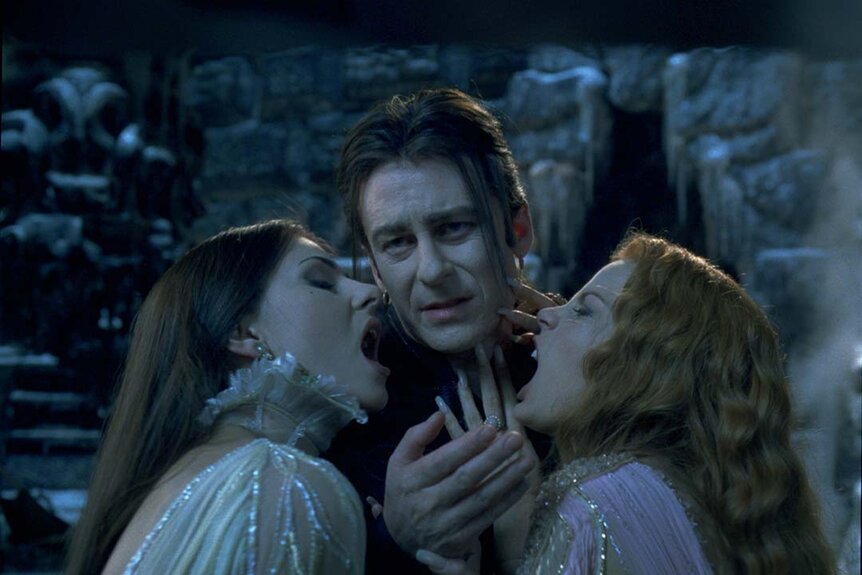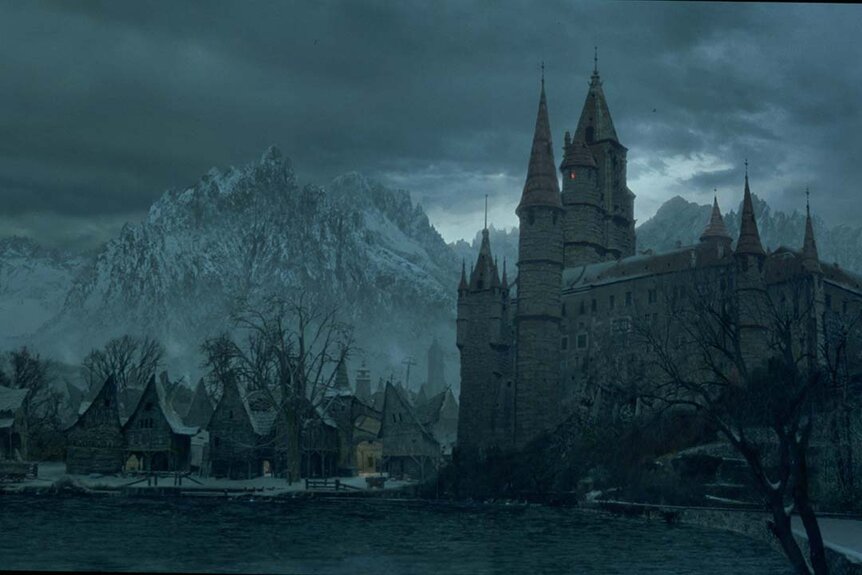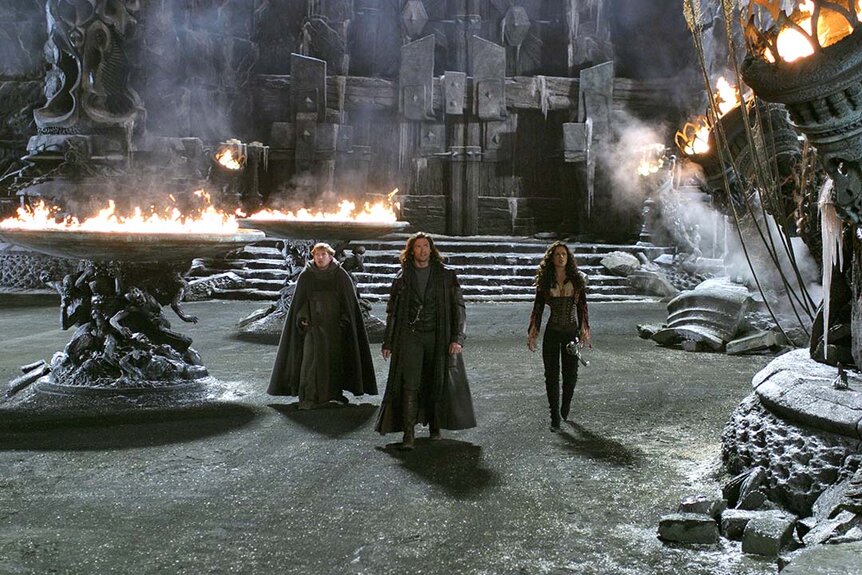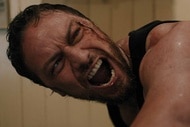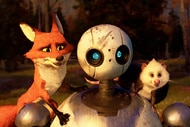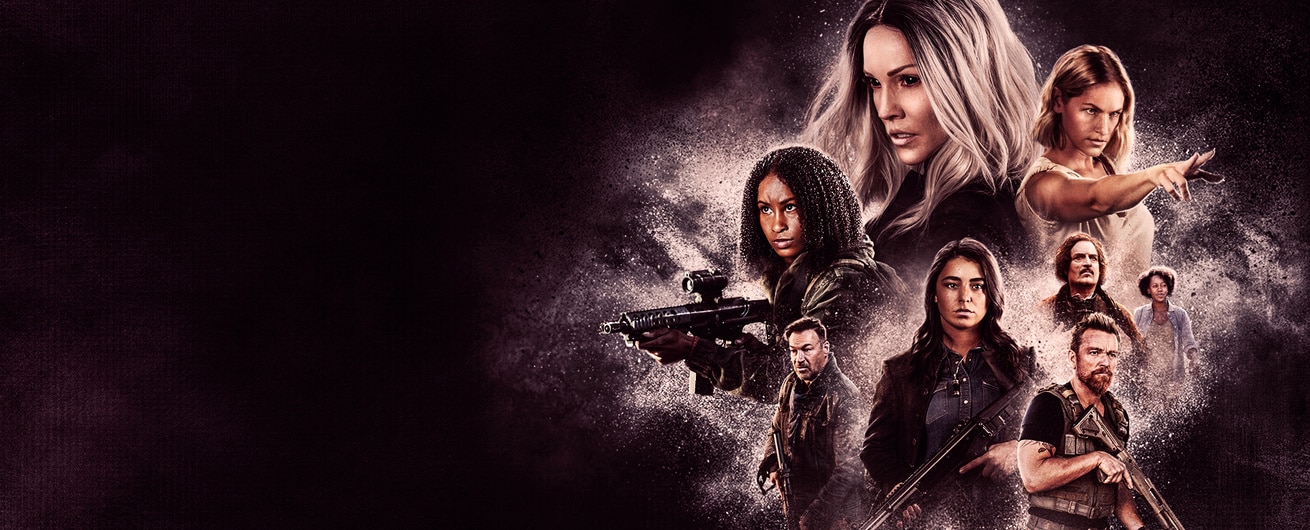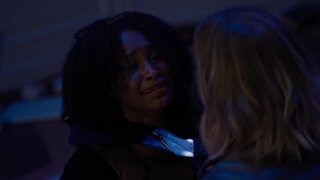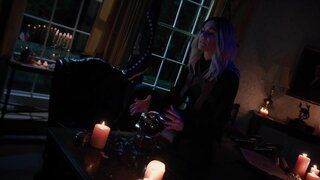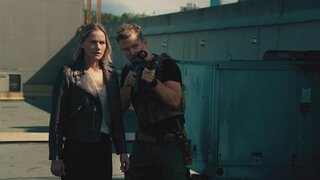Create a free profile to get unlimited access to exclusive videos, sweepstakes, and more!
A Decade Before the Dark Universe, Van Helsing Was a Wild Remix of Universal's Monster Worlds
Stephen Sommers and two other crew members sit down with SYFY WIRE for a look back at the 2004 fantasy blockbuster.
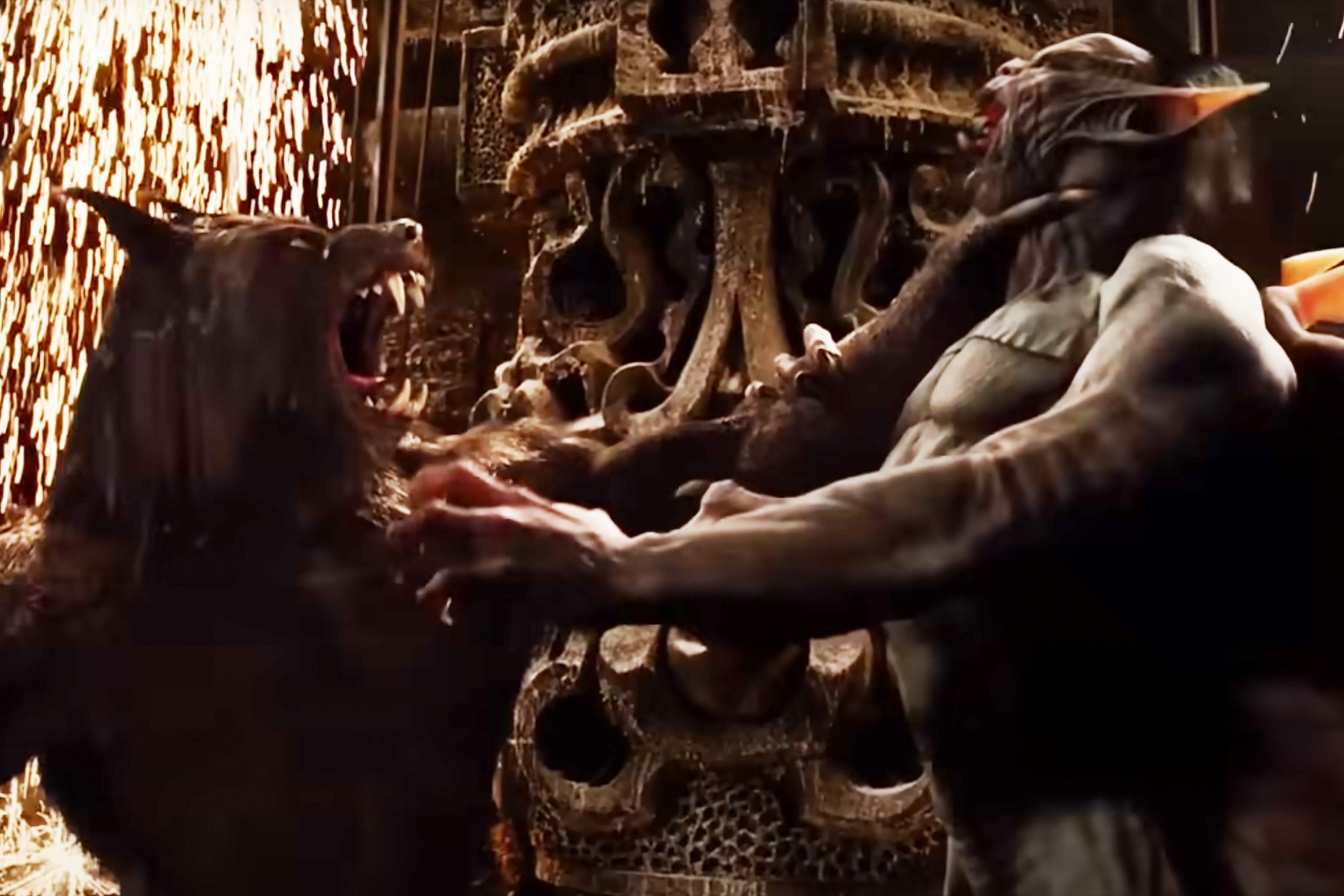
Beyond the Bobby Pickett song, what do you think of when we say the phrase "monster mash"?
For us, it means only one thing: 2004's Van Helsing (now streaming on Peacock). In the wake of the explosive box office successes that were The Mummy and The Mummy Returns, writer-director Stephen Sommers received the proverbial keys to the Universal Monsters kingdom. Like a kid smashing his action figures together in an epic battle of imagination, the filmmaker was free to mix and match nearly all of the iconic creatures that helped build Universal's reputation as a one-stop shop for all things that go bump in the night.
"I just love all the monsters," Sommers, who voraciously consumed the black and white movies featured on the weekly Mel’s Matinee Movie television program during his formative years in Minnesota, tells SYFY WIRE. "I thought, ‘Oh, it’ll be fun to do something. What should we do? Growing up, I loved Dracula and Frankenstein, but I'm not gonna do individual movies.' I just kind of played with it."
For More on Universal Monsters:
A Decade Before the Dark Universe, Van Helsing Was a Wild Remix of Universal's Monster Worlds
Leigh Whannell's Wolf Man Reimagining Howls Forward with Christopher Abbott, Julia Garner
Remembering Almost a Century of Universal Pictures' Dracula Saga at the Movies
"The Mummy film has horror elements in it, but it's also an adventure and a comedy. It's a mixed genre and I think the notion was to do the same idea with Van Helsing," adds editor/producer, Bob Ducsay. "I think it was just a natural progression to think, ‘Well, what if we got some of the [other] legendary monsters involved in a movie?'"
Playing like a "Greatest Hits" compilation of the seminal monster movies Universal released between the 1930s and 1950s, the fantasy blockbuster starred an up-and-coming Hugh Jackman (who was hot off the first two X-Men films at the time) as a 19th century agent of the Vatican tasked with eradicating supernatural forces of evil.
Unable to recall his murky past, Van Helsing journeys to Transylvania in order to thwart a dastardly, Bond villain-style plot hatched by Count Dracula (a delightfully hammy Richard Roxburgh) and his three brides. Along the way, the amnesiac protagonist crosses paths with reinterpretations of Doctor Jekyll and Mr. Hyde, The Wolfman, and Frankenstein's Monster.
"This was a new take on combining all of these monsters," says Steve Arnold, one of the project's five art directors. "It's interesting, Universal gave us this package of all the DVDs of all the famous [monster movies]. Frankenstein and all the stuff that they had in their catalogue from many, many years before, which was kind of a nice little plus."
How Stephen Sommers' Van Helsing Pays Homage to Universal's Monster History
Right off the bat, Van Helsing pays loving homage to its pre-Hays Code forebears with an 8-minute prologue filmed in black and white by the late Allen Daviau.
"I remember him being really excited about shooting a black and white sequence in the film. He’s really aping the beauty of that era," Ducsay remembers. "Because of that, the sequence was cut a little bit differently. It’s a little bit calmer. It’s more classically edited. Not that the entire movie isn't on some level, but it’s certainly a lot more muscular and cut-y in the rest of the film than in that sequence."
"I always knew I wanted it to be in black and white because I wanted it to feel like those movies that I saw in my basement when I was a kid," Sommers admits. "Every once in a while, you get the perfect location and the perfect actors and cinematographer. Everything comes together where you go, ‘This is exactly how I imagined it as a kid!’"
The wonderfully retro sequence involves Dracula murdering Victor Frankenstein (Samuel West) right after the mad scientist cracks the code to new life. Per Arnold, production designer Allan Cameron wanted the sets to look "very rough and irregular and asymmetric."
"One of the sets that I was responsible for was the whole Frankenstein [lab]," the art director says. "It’s all the electronic stuff, all the sparks. It’s a great, big cave space that is stonework and a castle kind of thing ... [We had] all these mechanisms that had to go up and down and move and be rigged with chain motors and various mechanisms."
Practical Sets vs. CGI in Van Helsing
Given the fact that CGI was still coming into its own, most of the backdrops were practically built with some extension added in post.
"There’s tons and tons of gigantic sets," Ducsay adds. "Dracula’s castle was built out in a parking lot in Downey [California]. It’s just enormous and then it’s made even more enormous by the set extensions. I really liked the way the movie was made. I think a lot of films we do now, the actors don’t get to interact as much with the real place, the real feeling. They don’t really get a sense of the scope."
"They stacked up all these shipping containers and then we built all of this facade out of Styrofoam," Arnold says. "It’s all that kind of stuff that looks carved to look like stonework. Then we had this giant section of bridge with these massive chain things holding it up. That was something that required a lot of engineering and a lot of working with the visual effects and special effects people to figure out how that was going to work."
A good chunk of the VFX work went into the menagerie of creatures. For instance, the movie's depiction of a werewolf transformation as an excruciatingly painful process — in which one tears off their skin to reveal the lupine berserker beneath — stands out as one of the most inspired elements of the piece. Getting the visual right, however, required an army of artists.
"I’m pretty technically incompetent, but I have a pretty good imagination," Sommers says. "So it’s really my job to explain it to all the guys who have to build the creatures. From the model makers all the way through the computer graphics guys. It’s very collaborative. I don’t believe in auteur theory; I believe in surrounding myself with people who are better and smarter than me, who will make me look good."
The writer-director was able to include every famous beastie in his screenplay, except for one — the Creature from the Black Lagoon, which would have appeared in "a moat around Dracula’s castle," he reveals. "Even though that sounds kind of goofy, I thought, ‘We could do something really cool.’ The studio then came to me and said, ‘Do you mind not using that one monster? Because we’re thinking about doing a standalone [project].’ I was like, ‘Yeah, okay. I think I’ve got enough in this movie anyway' ... He wasn’t integral [to the story]."
Ducsay, however, recalls that the Gillman was axed for "budgetary" concerns. "The design is really great," he notes. "I still have one of the maquettes and it would have been great to see him in that world. I think it would have been really fun. But ultimately, compromises are made on any movie you make. And even if you have a big budget, sometimes you have to kill your babies, unfortunately."
Was Van Helsing a Box Office Hit or Flop?
Van Helsing swept into theaters on May 7, 2004, and while critics were not particularly enamored with the film, it still managed to bring in $300 million at the worldwide box office. The only problem? A monstrous production cost of $160 million meant less of a net profit for the studio, which saw $400+ million grosses on The Mummy movies (for comparison, both were made for under $100 million).
"The movie did very nice business, but it just didn’t get to that level where the studio felt like they had to make another film," Ducsay explains. No sequel was green-lit, though Sommers confesses he never made any assumptions regarding a potential franchise.
"I guess I’m not that cocky. You never know what they’re gonna do," he says. "I’m sure I would’ve come up with ideas, but … The Mummy Returns is the only sequel I’ve done and I couldn’t have told you anything about it before opening weekend. At the end of opening weekend of the first Mummy, I was like, ‘Holy crap!’ The studio was all over me, ‘Of course we’re doing a second one!’"
Even if Universal called him up today with an offer to make a second installment, Sommers "would have to think about" where the story might go from here. "It really is a matter of sitting down and staring at a blank screen."
"The hard thing to do is to make a good first movie and I don’t think you ever want to get ahead of yourself because you might find, like on Van Helsing, that we only got to make one," echoes Ducsay. "I would say we were disappointed by that simply because we liked making the movie and would have liked to make another. But at the same time, it certainly wasn’t crushing because we weren't certain we were going to make another."
The Future of Universal's Monsters Franchise
A little over a decade later, however, the studio would tap into the creative spirit of Van Helsing with an ambitious plan to connect its catalogue of classic creatures. This "Dark Universe" (a horror-themed answer to the MCU) never came to fruition once it became clear the 2017 reboot of The Mummy was not the colossal hit Universal had been hoping for.
"Most good movies are because people really love what they’re doing," Sommers replies when asked his thoughts on the best way to reboot the company's lucrative monster library. "You also have to understood why you love it and why it works and why it worked for you. I’m from Minnesota and I watched the original Boris Karloff Mummy as a kid. It took place in Ancient Egypt and Cairo of the ‘20s and ‘30s. They shot it in Bakersfield, but I didn’t know that. It just seemed really exotic and cool. The same with Frankenstein and Dracula and The Wolfman. I understand why I love them and why they worked for me. And it apparently worked for other people as well."
Things have slowly begun to get back on track as Universal okays standalone, director-driven efforts based on the iconic IP such as Leigh Whannell's The Invisible Man (he's currently in production on a reimagining of The Wolfman) and Chris McKay's Renfield.
While fans wait for Nicolas Cage's Count Dracula to hit the big screen in Renfield, they can take in the OG monster mash, Van Helsing, which, despite what the critics might tell you, remains one of the coolest filmmaking rolls of the dice ever put to screen. "It’s classic Hollywood," Arnold says. "And there's a lot of it that is real stunts and real effects that are not the digital stuff that [you find in] a lot of the comic book stuff out now."
"It takes you to a different place, a different world, and I think it immerses you in a whole different universe," Sommers affirms. "I think it’s very imaginative and creative and I had a lot of great help from a lot of good people."
"The movie is such a visual delight, I think that that’s a reason to revisit it. But on the other hand, it’s also funny and romantic and a really solid adventure movie," concludes Ducsay, who, in recent years, has edited all of Rian Johnson's projects, including Looper, The Last Jedi, Knives Out, Glass Onion, and two episodes of Poker Face.
"Until you contacted me, I actually didn’t realize that Van Helsing was going to be streaming on Peacock and I was actually quite excited to hear that. Because having worked with those folks, it’s nice to know that I’m gonna have two bits of my work on the streaming service."
Van Helsing is now streaming on Peacock alongside The Mummy and The Mummy Returns.
Originally published Jul 26, 2023.
